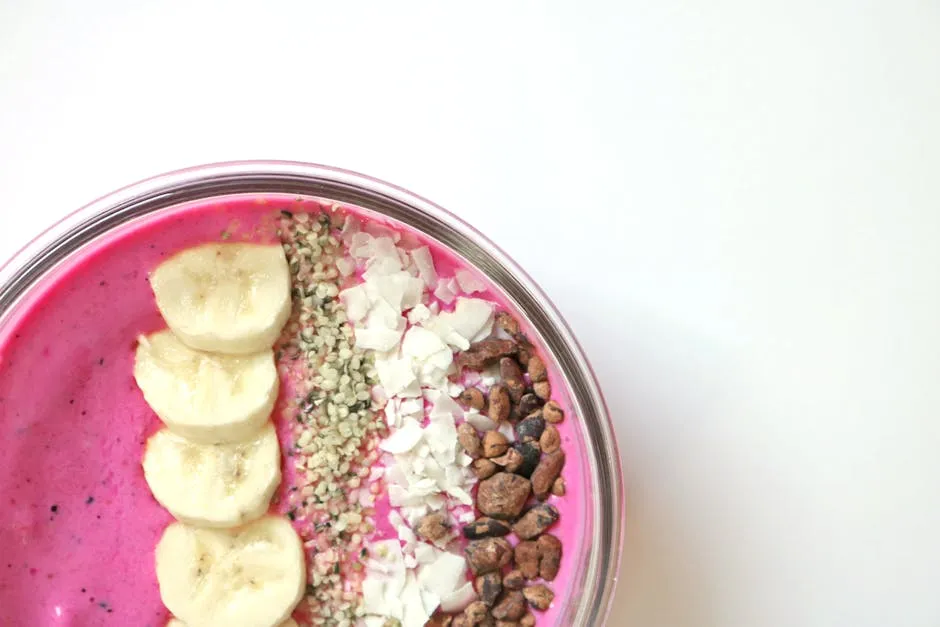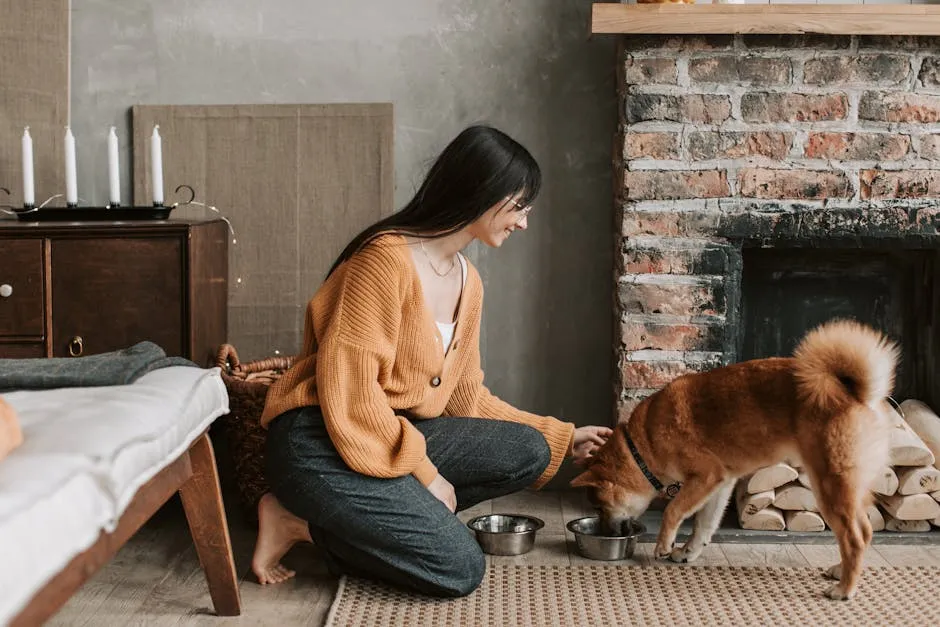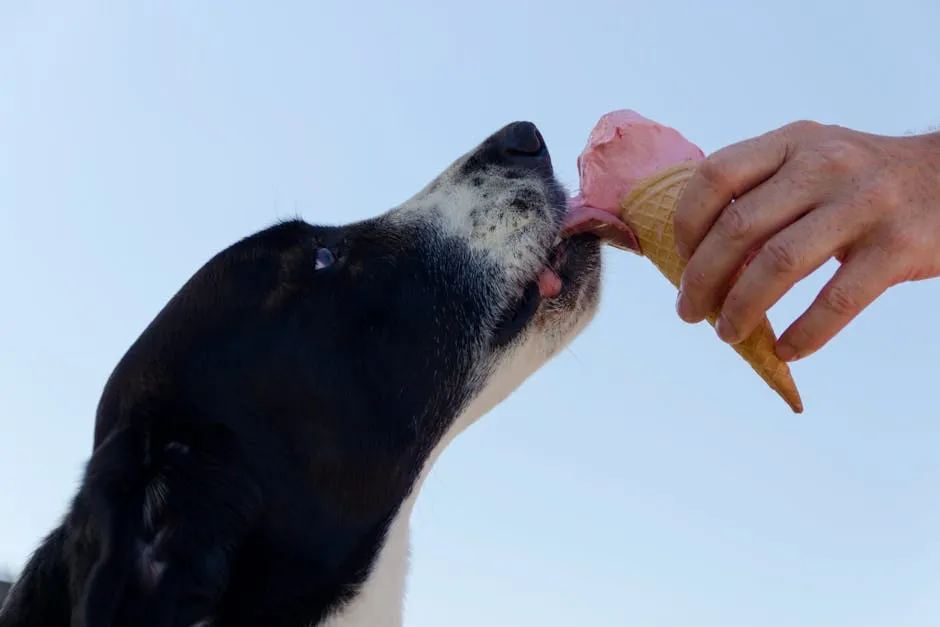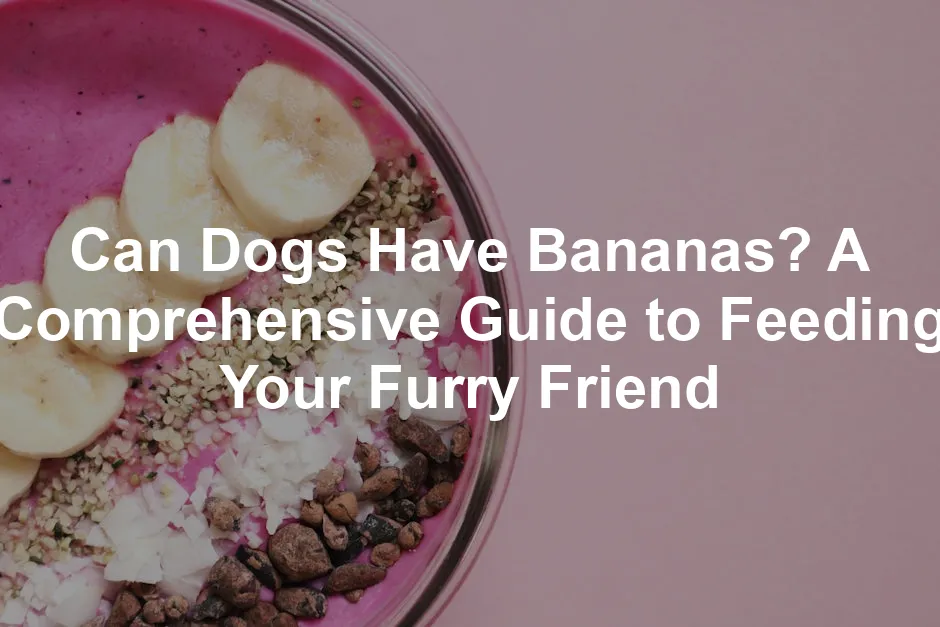Introduction
In the quest to find healthy treats for our canine companions, we often wonder if certain human foods are safe for dogs. One common fruit that frequently comes to mind is the banana. Known for their potassium-packed goodness and sweet taste, bananas are a staple in many households. But can our furry friends indulge in this yellow delight without any consequences?
Yes, they can! Bananas are generally safe for dogs to consume. They can be a tasty and nutritious treat for your pup when given in moderation. Packed with essential vitamins and minerals, bananas provide benefits like improved digestive health and energy. However, just like with any treat, moderation is key. Bananas contain a significant amount of sugar, which can lead to weight gain and other health issues if consumed excessively.
So, what should every dog owner know about feeding bananas to their furry friends? First, it’s essential to recognize that while bananas are generally safe, not all dogs may react the same way. Smaller dogs, for instance, should receive smaller portions to avoid any upset stomachs. Also, be cautious about the banana peel. Although it’s not toxic, it can cause digestive distress and potential blockages.

And speaking of treats, if your pup deserves a special reward, consider trying out Blue Buffalo Wilderness Trail Treats. They’re a fantastic way to keep your dog’s tail wagging while ensuring they get some wholesome goodness!
In this article, we’ll peel back the layers and explore the ins and outs of dogs and bananas. From nutritional benefits to potential risks, we’ll provide the ultimate guide for pet owners who want to keep their dogs safe and happy while sneaking them a tasty treat. So grab your pup and a banana, and let’s dive into the fruity details!
Potential Drawbacks of Bananas
While bananas can be a delightful treat for your four-legged friend, there are some important considerations to keep in mind. Moderation is the name of the game! Overindulging in bananas can lead to weight gain due to their high sugar content. This sugary goodness might seem harmless, but it can cause serious issues, especially for dogs already struggling with their waistlines. So, if your pup is looking a bit round, it’s best to limit those banana bites.
There’s also the risk of gastrointestinal upset. Too many bananas can lead to symptoms like diarrhea and vomiting. And nobody wants to deal with that mess! If you notice your dog experiencing any tummy troubles after banana consumption, it might be time to cut back on the fruity treats.
Now, let’s talk about banana peels. While they aren’t toxic, they can be quite the challenge for your dog’s digestive system. The tough fibers in banana peels can cause blockages or discomfort. So, it’s best to keep those peels away from your pup. If your dog does manage to munch on one, keep an eye out for any signs of an upset stomach or blockages. Symptoms like vomiting, loss of appetite, or lethargy can mean it’s time for a vet visit.
And while you’re at it, ensure your dog’s grooming is on point with a Hertzko Self Cleaning Slicker Brush. It’s a fantastic tool for keeping your dog’s coat looking sharp and free of tangles!
When it comes to serving size, it’s essential to tailor the amount of banana to your dog’s size. Small dogs should stick to a few slices, while larger breeds can enjoy half a banana at a time. This not only helps prevent overfeeding but also ensures your dog gets the best of both worlds: tasty treats without the tummy aches!
Incorporating bananas into your dog’s diet can bring variety and joy, but being mindful of portion sizes and potential risks is crucial. Balancing treats with your dog’s overall diet is the secret to keeping your furry friend happy and healthy.

Moderation is Key
Sugar Content
Bananas are sweet, and that sweetness is primarily due to their sugar content. While this makes bananas a tasty treat, it’s crucial to remember that too much sugar can be problematic for dogs. Overweight pups or those battling diabetes should steer clear of sugary snacks. Excessive sugar intake can lead to weight gain, and nobody wants their furry friend to pack on the pounds. A hefty belly can lead to heart issues, joint problems, and a host of other health concerns. So, keep those banana servings minimal, and think of them as an occasional indulgence rather than a daily staple.
Portion Control
When it comes to portion sizes, a little goes a long way! Here’s a handy guide based on your dog’s size:
- Extra-small dogs (2-20 pounds): 1-2 slices, about 1/4-inch thick.
- Small dogs (21-30 pounds): Up to 3 slices.
- Medium dogs (31-50 pounds): Up to 6 slices.
- Large dogs (51-90 pounds): A handful of slices, roughly half a banana.
- Extra-large dogs (91 pounds and over): Up to half a banana.
These guidelines help prevent overindulgence while still allowing your dog to enjoy the fruity goodness. Remember, moderation is the secret ingredient for a happy and healthy pup!

Risks of Overconsumption
While bananas can bring joy to your dog’s snack time, too much of a good thing can lead to trouble. Overconsumption may cause gastrointestinal upset, manifesting as diarrhea or vomiting. If your dog gobbles down too many banana slices, be on the lookout for these symptoms. Nobody wants to clean up a mess after a banana binge! Keep an eye on their stool; if things seem a bit too loose, it might be time to cut back on those banana treats.
Weight gain is another significant concern. Dogs that indulge in too many sugary snacks, including bananas, can become overweight. Obesity in dogs can lead to joint issues, heart disease, and other health complications. It’s essential to balance their diet, ensuring treats like bananas account for only a small fraction of their daily intake.
Speaking of health, ensure your pup is ready for any adventure with a PetSafe EasySport Dog Harness. It ensures comfort and security during your outdoor escapades!

Allergies and Sensitivities
Introducing bananas into your dog’s diet should be approached with caution. Some dogs may develop allergies or sensitivities to new foods. When offering bananas for the first time, start with a small piece and monitor your pup for any signs of distress. Watch for symptoms like gas, excessive scratching, or any unusual behavior. If you notice any of these signs, it’s best to stop feeding bananas and consult your veterinarian.
Speaking of vets, it’s always wise to have a chat with them before making significant dietary changes. This is especially true for dogs with existing health issues or those on special diets. Your vet can help determine if bananas are a suitable addition to your dog’s meals, ensuring their health remains a top priority. Remember, a little caution goes a long way in keeping your furry friend happy and healthy!
For more on how to recognize and treat common allergies in dogs, check out this guide on How to recognize and treat common skin allergies in dogs.

Can Dogs Eat Banana Peels?
When it comes to banana peels, caution is key. Though not toxic, banana peels can be quite a challenge for your dog’s digestive system. The tough fibers in the peels are hard to break down. This can lead to potential blockages in your pup’s intestines. If your dog has a penchant for munching on everything, including the peel, you might want to think twice.
Banana peels also contain pesticides. While rinsing might help, it’s often better to avoid feeding your dog the peel altogether. The risk of gastrointestinal distress outweighs the benefits. If your dog accidentally chomps down on a peel, keep a close eye on them. Look for signs of discomfort, such as vomiting or a lack of appetite.
Another symptom to watch for is lethargy. If your pup seems less energetic than usual, it may indicate something is amiss. Abdominal pain is another warning sign. If you notice your dog whining or acting unusually, consult your veterinarian.
In summary, while banana peels aren’t inherently dangerous, they certainly pose risks. It’s best to stick with the banana flesh, leaving the peels for the compost bin. Your dog will appreciate the sweet treat without the potential side effects!

Creative Ways to Serve Bananas to Your Dog
Fun Serving Suggestions
Let’s make banana time fun for your furry friend! There are numerous creative ways to serve this delightful fruit that will keep tails wagging. Here are some fantastic ideas to consider:
- Frozen Treats: On hot days, frozen banana bites are a game changer. Simply slice a ripe banana into small chunks. Place them in a freezer-safe bag or container, and freeze for a couple of hours. These icy bites are not just refreshing; they’re a great way to keep your pup cool!
- Mashed Bananas: If your dog enjoys their food mixed up, mashed bananas are an excellent addition. Mash a ripe banana and mix it into their regular dog food or yogurt. It adds a tasty twist to their meal and provides a nutritious boost. Just remember to keep portions reasonable to avoid an upset tummy!
- Dog-Friendly Recipes: For the adventurous doggy chef, why not whip up some homemade treats? Combine mashed bananas with oats and a bit of peanut butter (ensure it’s xylitol-free) to create a dough. Shape them into small cookies and bake at 350°F (175°C) for about 15 minutes. Let them cool before treating your pup.
- Another fun recipe is banana and pumpkin biscuits! Mix mashed bananas with pumpkin puree and whole wheat flour. Roll out the dough and cut it into fun shapes before baking. Your dog will love these chewy snacks, and they’re simple to make!

And when you’re preparing those delicious treats, why not have a “Doggie Desserts: 75 Yummy Treats for Your Pooch” recipe book on hand? It’s a fantastic resource for creating delicious dog treats that are sure to impress your furry friend!
Incorporating Bananas into Dog Training
Bananas can also be a fantastic training tool! Using banana slices as rewards during training sessions can keep your pup motivated. Dogs often respond well to treats, and bananas are no exception. Their sweet taste is hard for most dogs to resist.
When training, remember to cut the banana into tiny pieces. This way, you can reward your dog frequently without overdoing it. It’s all about keeping your dog engaged while ensuring they stay healthy.
Using banana slices, you can also create a positive association with commands or tricks. For example, if your dog sits on command, promptly reward them with a slice of banana. This method reinforces good behavior and makes training sessions enjoyable.
In conclusion, bananas are a versatile fruit that can be served in various ways. From frozen treats to homemade recipes, the options are endless. Incorporating bananas into training can also enhance your bond with your furry friend. Just remember to keep portions small, and your dog is sure to love their banana experience!

Conclusion
In conclusion, bananas can be a delicious and nutritious addition to your dog’s diet when offered in moderation. These yellow fruits are rich in potassium, vitamins B6 and C, and fiber, all of which contribute to your dog’s overall health. They can be a fantastic alternative to traditional dog treats, making snack time a bit more exciting for your furry friend.
However, it’s crucial to remain vigilant regarding portion sizes. Bananas contain a significant amount of sugar, which can lead to weight gain and other health issues if consumed excessively. Start small by introducing a few slices and observing how your pup reacts. If they show any signs of digestive upset, such as diarrhea or vomiting, it’s best to cut back on the banana servings.
Always consult your veterinarian before making significant dietary changes, especially if your dog has underlying health issues such as diabetes or obesity. Your vet can provide tailored advice to ensure your dog remains healthy and happy. With the right approach, bananas can bring joy and health benefits to your pup’s treat routine!
And remember, for those moments when your pup needs a little extra comfort, a cozy Furhaven Pet Dog Bed can work wonders! It’s perfect for snuggling up after a fun day of training and treats.
FAQs
Please let us know what you think about our content by leaving a comment down below!
Thank you for reading till here 🙂
All images from Pexels





